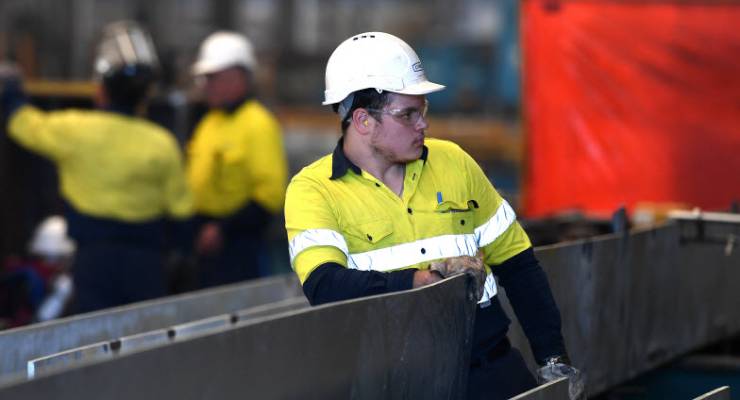
The law is failing people engaged on the work for the dole program — inadequate training and fear of reprisal if they raise safety issues can lead to injury, and when they do get hurt at work, there is no safety net for them.
Work for the dole is the government program where jobseekers are forced to engage in work for not-for-profits or government organisations in order to maintain their Centrelink payments. Safety issues on Work for the Dole sites has been under greater scrutiny since the death of Josh Park-Fing on a WFD site last year.
David Beattie, an industrial lawyer who has represented several injured WFD workers who are chasing compensation, says the imbalance of power between worker and employer on work for the dole sites is dangerous. Workers on WFD who raise issues about unsafe conditions or inadequate training are often threatened and feel they have no choice but to put up with what they know is a safety risk.
“People who complain basically get told ‘shut up, or I’ll report you and you’ll lose your dole’,” he said. “They definitely get threatened.”
One of Beattie’s clients is Mick Smart. He was doing heavy manual labour on a work for the dole site, having received no training and inadequate protective gear, when he fell backwards into some rocks.
“I heard a loud ‘pop’ coming out of my hip, and felt sharp electric pain go up my back,” he told Crikey.
After taking a short break, reporting his injury to his immediate supervisor — a boarder working on site for food and rent — and taking painkillers that he had brought to treat the discomfort the work was already causing him, he resumed work. He had previously been warned that if he did not finish his tasks before the end of his shift, he would be reported and could lose his Centrelink payments.
Dr Rebecca Loudoun, senior lecturer at the Department of Employment Relations and Human Resources at Griffith University, told Crikey that the precarious nature of their work lead to a lot of Work for the Dole injuries.
“Research consistently shows that precarious employment arrangements result in diminished health and increased injury and illness risks,” she said “Even when the hazards present at a workplace are qualitatively similar in nature to those of other workers the risks are higher for precarious workers such as those on the work for the dole scheme.”
She said Work for Dole workers were reluctant to draw on their rights to safeguard their own safety at work, when they are aware of them.
“They are also less likely to be aware of the hazards present at the workplace and individual workplace policies and procedures to safeguard health and safety and to receive training in wokirplace health and safety,” she Said.
Follow the initial incident Smart continued working through to the next week. He told his on-site host about the incident and that he was in pain and taking over-the-counter medication, but “no one was particularly interested in me filling out an injury or incident report”.
The next week, lifting a heavy wheelbarrow, he felt another shock of pain up his back and fell to his knees. More than a year of medical appointments since, he has been diagnosed with disc herniation, nerve impingement, unilateral sacrolilitis, internal bleeding from nerve damage and many other physical injuries. He’s also been diagnosed with anxiety, depression, sleep deprivation, and suicidal thoughts.
Andrea*, 25, experienced an extended period of unemployment after she completed a series of diplomas in 2014. Through Centrelink she was placed with a job provider, and after that failed to yield a job, she was placed on Work for Dole, doing gardening for a “hippie therapy place,” she told Crikey.
“We were just given a pair of gardening gloves and told ‘you’ll do weeding and gardening, and if you have to do anything big like cut down a tree, we’ll tell you how’. They said they would provide steel-cap boots, but I didn’t get those before I left.”
After a week of working 7am to 5pm, a repetitive strain injury meant her hands had swollen “to the point where I could barely move my fingers”. She said she had not received any information from her job provider about her rights regarding safety in the workplace. Neither had Smart.
Loudoun said there is no requirement for job placement agencies to provide WFD workers with training or education on their rights around workplace safety.
Despite being unable to work, Smart has had to pay for all his own costs since his injury. WFD workers aren’t employees according to law, so they aren’t covered by the workers’ compensation legislation that protects injured employees who have diminished capacity to work. As such, if they are injured at work, they have to sue a workplace under common liability law.
“So it becomes like if you were just someone off the street, went into a store and got injured. It’s the same process.” Beattie said.
Beattie said the exemption from workers’ compensation was based on the “fiction” that WFD workers were not employees.
“They are employees and they should be treated as such,” he said. “If you’re a customer and you hurt yourself on my premises, I didn’t direct you, or have any oversight. If you’re doing work for the dole, and I tell you to lift something and you get a hernia, that’s under my supervision, it’s under my watch.”
Loudoun said the legal relationships employers have with these people on work for the dole is “ambiguous or blurred at best and contradictory at worst”.
*Not her real name








Jeez, Crikey, be careful will ya? Don’t you know what a turn-on articles like this are for Liberal/IPA types? “I heard a loud ‘pop’ coming out of my hip, and felt sharp electric pain go up my back.” I swear I heard the heavy breathing emanating from Canberra all the way down here in Melbourne. If you don’t display a little more discretion in what you choose to publish then you’ll be giving them orgasms all across the country.
Strange how people who “work for the dole” legally up to thirty hours a week dot get pro rata super payments
In relation to the workers’ compensation, this article is somewhat misleading. The idea that there is no ‘safety net’ for injured workers is incorrect. According to a government info sheet:
“To cover job seekers while they are participating in Work for the Dole activities, the Australian Government has purchased:
1. Personal accident insurance for an injury or death that occurs during activities, including any associated training, and travel to and from activities, and
2. combined public and/or products liability insurance which covers job seekers’ liability arising out of their negligence that causes personal injury to third parties or damage to third parties’ property.
The personal accident policy is not a workers’ compensation policy. Participants in Work for the Dole activities do not generally qualify for workers’ compensation.”
As a result WFD workers receive substantially the same as they would receive if they were covered under a statutory policy – other than income replacement of course which is given to them by the government already.
Work for the Dole is just slave labour by proxy.
If there is work to be done, give people jobs and pay them a fair wage.
If the government is requiring the unemployed to work for the dole, then it’s the employer.
If someone on unemployment benefits is injured working for the dole, then a medical practitioner ought to be able to write a medical certificate if the person is unable to work, ensuring that the unemployment benefits continue.
And the employer (that is, the government) ought to cover the cost of medical treatment.
It seems to me to be reasonable that if the government is requiring ‘work for the dole’, then it also should accept responsibility if something goes wrong. And it would certainly concentrate their attention knowing that they bear ultimate responsibility even if the don’t have direct supervision over the work conditions.
It also seems reasonable that the government should also be making superannuation payments.